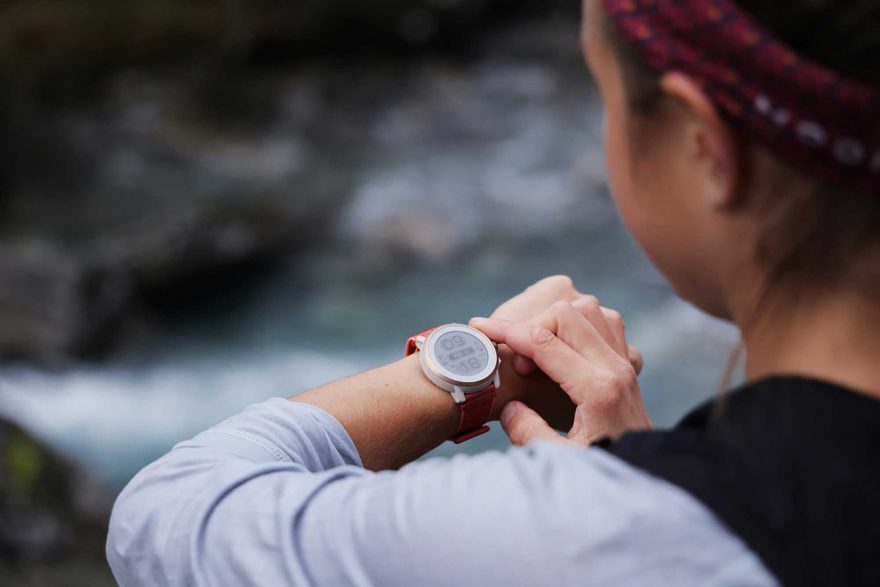
Image courtesy of COROS
Every runner brings their own strengths and weaknesses to the table. Some can chug uphill forever but struggle to find their footing on the descent, while others ride the struggle bus all the way up only to more than make up for lost time on the way back down. Some pound pavement day in and day out while others eat dirt for breakfast. Some live for their weekly long run while others dream of hard intervals. You get the gist.
The point is, no two runners are the same. This means that it’s rare for runners to be putting in the exact same amount of effort, even when running side by side. Chances are high that one of those runners will be working harder than the other at any given time, based on their strengths and weaknesses. It also means that it’s often difficult to measure an individual runner’s growth over time. Unless you retrace your steps every time (which sounds neither fun nor realistic), no two runs are quite the same either.
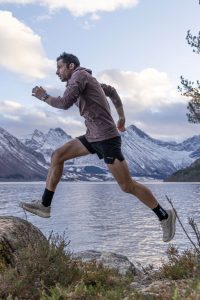
Image courtesy of COROS
In that light, pace doesn’t seem like the most reliable training benchmark. Speed doesn’t mean squat from one run to the next. But many runners still rely on pace to guide them, which makes sense. It’s a clear and quantifiable metric. Nothing else is as easy to measure.
Effort As A Metric
Until now, that is. A recent update to COROS watches redefines the brand’s approach to running pace. Alongside actual speed is a new metric: Effort Pace. This alternative measurement puts pace into context. It applies your unique skillset to each run and offers a personalized pace that reflects your actual effort across various gradients and types of terrain.
For instance, let’s say that the day calls for a few sets of hard hill strides. You pick a steep hill at a 10 percent grade and get to work. Your objective speed reads an average of 7’03” for each of those reps. But three weeks ago, you’d performed the same workout on a different hill at a 6 percent grade, with an average pace of 6’51” per rep. Normally, you wouldn’t be able to directly compare those two workouts because of the difference in terrain. The second hill presented more of a challenge than the first, so your pace will naturally reflect that difference in difficulty. It would be tough to tell from those numbers alone if your performance changed at all — for better or for worse –over the course of those three weeks.
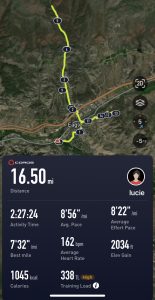
Effort Pace takes those objective paces and turns them into mathematically calculated subjective ones. It takes incline into account and spits out a different number: 5’49” This number reflects how fast you might have gone had you been running on flat ground, compared to the 7’03” you ran up the steep hill. It does the same for that similar workout three weeks ago so that you can better compare the two. If that 6’51” from the first workout actually translates to 5’55” on flat ground, then you can see that you’ve actually improved — despite how your actual pace looks on paper.
Adjusted Pace Versus Effort Pace
This isn’t the first time that COROS has presented an alternative to traditional pace measurements. Effort Pace represents the next iteration of Adjusted Pace, their first attempt at creating a more universal training metric.
But it’s not just another name for the same thing. Adjusted Pace only converted uphill running to flat running using a standard formula across the board. Such adjustments are nothing new. Almost every training system boasts something similar: Garmin, Strava and TrainingPeaks all offer their own version of Adjusted Pace based largely on GPS grade readings from your run. TrainingPeaks’ version, which is called Normalized Graded Pace and is used by Suunto in its watches, also adds an Intensity Factor into the equation using heart rate zones.

Effort Pace takes the adjustment a step further than any of these takes on Adjusted Pace. It personalizes the pace based on what it knows about you as a runner. The COROS EvoLab training evaluation platform studies how you typically fare on climbs, descents, and flat ground, and compares your performances across all of those changes in terrain to figure out where your strengths lie. The resulting number shows how hard you were working on that particular kind of terrain compared to how hard you’d be working on flat terrain. And I don’t mean “you” in a general sense, but you specifically. If your historical data shows that you shine on steep climbs but lose ground coming down, Effort Pace will reflect the difference in workload on either side. Your Effort Pace won’t look the same as anyone else’s, even on the same route, so you can use the metric to strive toward your version of improvement.
With that in mind, these readings won’t be 100 percent accurate right away. It takes time for the COROS EvoLab training evaluation platform to get to know you, your style, and your strengths as a runner. The more data it has to work with, the better it can interpret your effort.
If you’re new to COROS, give it a few weeks of regular runs before putting too much stock in the alternative pace it offers. Be sure to spend as much time on hilly terrain as possible, too, so that it can pull from a wide range of data.
Pair With The POD 2
You can fine-tune things even more by pairing a POD 2 with your COROS watch. This tool attaches to either the top of your shoe or your waistband to get a more precise read on your pace. It connects to your watch via Bluetooth to provide an instant reading of your pace compared to the slight delay that plagues regular GPS technology. The POD also monitors distance, cadence, foot balance, stride length, stride height, stride ratio, and ground contact time as well as environmental temperature, altitude, and direction.
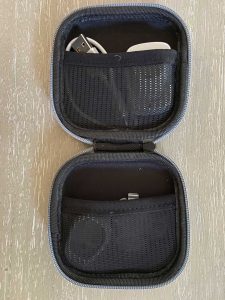
The point of the POD is basically to add more specificity and consistency to your bank of running data — which in turn increases the accuracy of your Effort Pace readings as elevation, speed, and running form change.
I’ll be honest: I don’t care very much about specificity and consistency. As I mentioned in my review of the COROS Apex 2, I specialize in long distance trail races measured in hours rather than milliseconds. Most of the details that the POD 2 calculates go in one ear and out the other.
But the precise pace readings have been an unexpected game-changer for me this winter. A nagging knee injury has forced me to take the bulk of my training indoors to avoid the treacherous sheets of ice that are a mainstay in my Colorado town from December all the way through March. This is where the POD has made a real difference in my training. Strapped to my shoe, I can get a pretty accurate pace reading while on the treadmill based on stride measurements.
Before, I’d have to calibrate the distance by as much as half a mile after stopping the clock and manually change the estimated pace during speedwork intervals. Now the POD does all that for me. My watch consistently reads within .05 miles of what the treadmill measures. It’s quick to adjust as I go in and out of fast intervals too. Now I have a much better sense of how to translate my indoor training to outdoor environments.
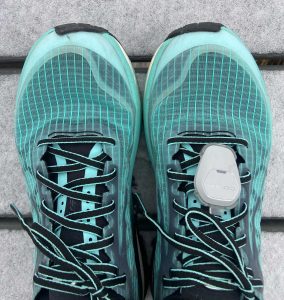
Image by Lucie Hanes
The manicured surface of a treadmill can’t compare to the arduous, rocky climbs waiting for me in my first races of the season … but effort can. The highly responsive pace measurements from the POD 2 helps me instantly tailor my effort level on the treadmill to make my training more effective. I can keep myself in check by matching my Effort Pace on the treadmill to my ideal Effort Pace on the trail.
Pace in Perspective
Effort Pace helps put everything in perspective. It’s a reminder that running isn’t as simple as it seems from the outside. Any change in terrain can have a drastic impact on how hard you’re working and the impact of that work on your fitness. Having a universal metric has increased the efficacy of my training no matter where I clock the miles — on rolling trails, paved roads, or the monotonous treadmill.
I see this feature having the most benefit for trail runners who find themselves moving through variable conditions that keep them from maintaining a steady pace. I’m all for it. It’s high time that the trail side of running gets a leg up in terms of actionable training data. And for COROS, a brand that’s already done so much to provide more resources to off-road runners, it’s just a starting point. I expect to see even more environmental factors come into play with Effort Pace: temperature, humidity, altitude, and wind speed all affect output too.
No, we won’t ever run in a vacuum nor do we want to. The unpredictable nature of rugged outdoor spaces is a huge part of the allure. But the ability to consistently track performance across such inconsistent conditions would help bridge the gap between adventure and structure. If you ask me, that sounds like a powerful combination.
Lucie Hanes is an avid writer and adventurer on rock and trail with a passion for sharing her outdoor enthusiasms through journalism and mental strength consultation.
 Your Privacy Choices
Your Privacy Choices